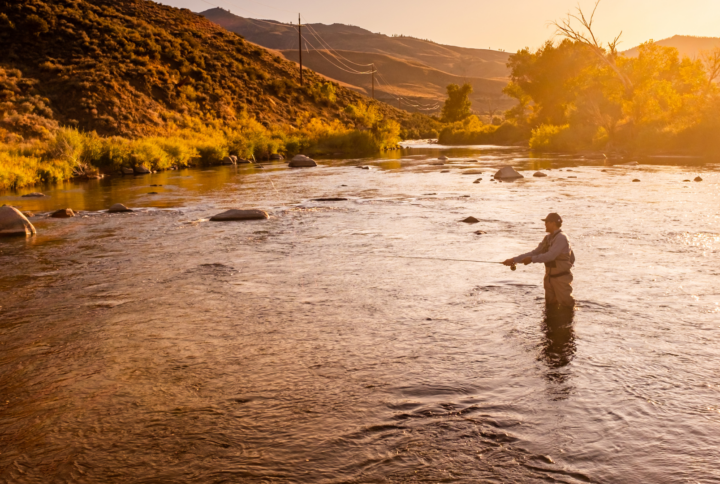Delaware River - Lordville - New York
Fly Fishing River Report & Conditions
Delaware River – Lordville - Water Flow Chart
Delaware River – Lordville - Weather report & radar
Delaware River – Lordville - General hatch chart
| Month | Hatch | Time of Day | Recommended Fly Sizes | Popular Fly Patterns |
|---|---|---|---|---|
| January | Midges | Afternoon | #20-28 | Griffith’s Gnat, Midge Larva, Midge Pupa |
| February | Midges, Black Stoneflies | Afternoon | #16-20, #14-18 | Zebra Midge, Black Beauty, Black Stimulator |
| March | Little Black Stoneflies, Blue Quills | Afternoon | #18-22, #16-18 | Black Stonefly Adult, Quill Gordon, Blue Dun |
| April | Hendricksons, March Browns, Caddis | Mid day – Evening | #12-14, #10-12, #14-16 | Adams, March Brown, Elk Hair Caddis |
| May | Sulphurs, Green Drakes, Caddis | Afternoon – Evening | #14-18, #8-10, #14-16 | Pheasant Tail, Green Drake, Elk Hair Caddis |
| June | Light Cahills, Sulphurs, Isos | Afternoon – Evening | #12-14, #14-18, #12-14 | Light Cahill, Sulphur Dun, Iso Nymph |
| July | Tricos, Terrestrials, Sedge | Early morning – Evening | #20-26, #10-20, #14-18 | Trico Spinner, Ant Patterns, Elk Hair Sedge |
| August | Terrestrials, Tricos, Blue Winged Olives | Mid day – Evening | #10-20, #20-26, #16-20 | Dave’s Hopper, Trico Spinner, BWO Nymph |
| September | Blue Winged Olives, Terrestrials, Midges | Afternoon – Evening | #16-20, #10-20, #20-28 | Adams, Dave’s Hopper, Zebra Midge |
| October | Blue Winged Olives, Caddis, Midges | Afternoon – Evening | #16-20, #14-16, #20-28 | Parachute Adams, Elk Hair Caddis, Griffith’s Gnat |
| November | Blue Winged Olives, Midges | Afternoon | #18-22, #20-28 | BWO Nymph, Midge Larva, Midge Pupa |
| December | Midges | Afternoon | #20-28 | Griffith’s Gnat, Midge Larva, Midge Pupa |
Delaware River – Lordville Access Points
Being one of the significant spots for fly fishing, the Delaware River – Lordville has several access points. Here are the best ones:
- Buck Eddy: At the junction of the main river and starlight branch, lies this popular access point. Well-known for a grand variety of trout species.
- Kellams Bridge: Providing an ideal fishing spot with deep slow moving waters sheltering large Brown Trout.
- Hancock: Comprised of East and West branches. Known for its vast variety of species, including American Shad, it’s the heart of the Upper Delaware River system.
- Callicoon: Known for its excellent trout fishing, it’s a top destination for accessing the river.
- Narrowsburg: Bordering the Eagle Institute, an abundance of trout species can be found here.
- Lordville: The deepest section of the river, offers quality fishing and drift boat operations.
Delaware River – Lordville Fishing Spots
- Junction Pool: This is where the East and West branches of the Delaware River meet. It’s a famous spot for catching large trout.
- Ball Eddy: This spot holds copious amounts of trout. Fly fishing at this spot is ideal during the early season.
- Buckingham Access: Suitable for wading and offers ample opportunities for landing smallmouth bass and walleye in addition to trout.
- Hancock: Here, the cold water makes it an excellent location for trout fishing throughout the hot summer months.
- Callicoon: This stretch of the river is noted for its shad and smallmouth bass runs.
Delaware River – Lordville Local Fish Species
- Smallmouth Bass: One of the most commonly targeted fish in the Delaware River, they are aggressive feeders and are known for their exciting fight.
- Shad: The annual shad run in the spring is a popular event for fly fishermen. These fish are targeted for their size, strength, and the challenge they present.
- Walleye: A predatory fish known for its aggressive behavior, especially during spawning season in late spring and early summer.
- Musky: Known as the ‘fish of ten thousand casts’, Muskies are prized for their size and the challenge they present.
- Northern Pike: Another large predatory fish, known for its aggressive nature and its willingness to strike at a wide variety of flies.
- Brook Trout: A popular target for fly fishing due to its beautiful coloration and preference for cold, clean water.
- Brown Trout: Known for their hard fight and the beautiful coloration, this species is often found in faster moving water.
- Rainbow Trout: Highly prized by fly fishers for their distinctive markings, their propensity to leap when hooked and their aggressive feeding habits.
About the Delaware River – Lordville
The Delaware River is often considered the heart and soul of Lordville, a little-known treasure in northeastern Pennsylvania. Lordville’s history is tightly intertwined with the life of this majestic river. Long before European settlers arrived, the river was a vital pathway for the Lenni Lenape people, used for transportation and fishing.
As settlers came, the Delaware River turned into a key conduit for trade, enabling Lordville’s growth into a thriving rural community. The 19th century brought an industrial boom that made abundant use of the river’s natural resources, adding to the wealth and significance of the region.
In modern times,
- the Delaware River is cherished for its beauty and tranquility,
- offering boating, fishing and wildlife spotting opportunities.
Community Contributions
Be part of the fishing community-
Submit your update!
Coming Soon



